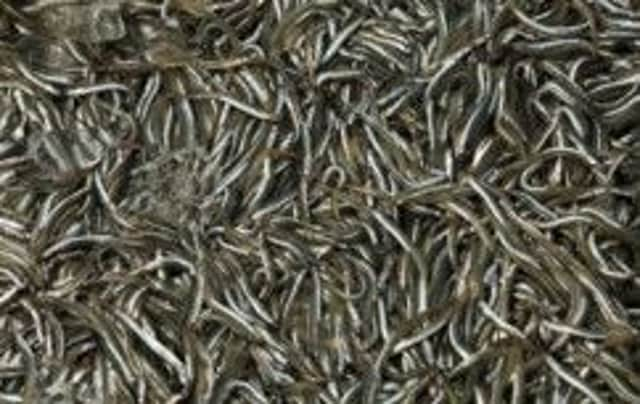Sandeel fishing linked to Scottish seabird decline


Scientists accept that climate change and a warming sea surface temperatures are already having a major impact on the populations of the sandeel – a vital source of food for many of Britain’s seabirds.
But new research led by the British Trust for Ornithology (BTO) and the Joint Nature Conservation Committee (JNCC) has shown that populations of kittiwakes, terns, fulmars and shags are also being hit by the boats which catch thousands of tonnes of sandeels each year to be turned into animal feed and fertiliser.
Advertisement
Hide AdAdvertisement
Hide AdThe joint study, published in the latest edition of the scientific journal Ecological Indicators, shows that levels of seabird breeding failure were higher in years when a greater proportion of the North Sea’s sandeels was being fished commercially. It also reveals there has been a rise in breeding failures on colonies on the east coast of the UK in eight of the nine species of seabirds they studied, based on figures stretching from 1986 to 2010.
The Arctic tern, little tern, common tern, sandwich tern, kittiwake, common guillemot, shag and fulmar have all suffered population declines. The only species that has not declined in abundance in the North Sea over the past 27 years is the razorbill.
The study states: “We found that changes in species’ breeding failure rates were strongly correlated with pressure from fisheries. The extent to which sandeel fisheries impact upon breeding seabird populations may be linked to how accessible different stocks are, and how readily larval sandeel can disperse between populations on different banks in the North Sea.
“Whilst both the Wee Bankie [off Scotland’s east coast] and Shetland sandeel fisheries have been closed over part of our study period, the most intensive North Sea sandeel fishery operates on the Dogger Bank. This area is within the foraging range of several of our study species from colonies on the east coast of the UK and others may be willing to travel greater distances to exploit the predictable food resource it offers, particularly when local prey availability is reduced.”
The report warns: “Whilst sandeel are largely sedentary, their larvae are capable of dispersing more widely and disruption to this dispersal can significantly affect local sandeel availability.
“Consequently, intensive fisheries activity during the spawning period in areas like Dogger Bank may reduce the supply of larvae elsewhere.”
Dr Aonghais Cook, the lead author of the study and a research ecologist with the BTO, described the findings as “striking”.
He told Scotland on Sunday: “In years when a greater proportion of the North Sea’s sandeels was fished, rates of seabird breeding failure rose.
Advertisement
Hide AdAdvertisement
Hide Ad“The UK holds really important populations of seabirds at international levels.
“We have a significant proportion of the world’s breeding populations of several of the species that we looked at and we are concerned that those populations should remain healthy.
“We are definitely suggesting there is a strong link between the level of the sandeel fishery and declines in seabird breeding success.”
He said it is widely accepted that fish populations such as sandeels need at least a third of their stock to survive in any given year to support healthy seabird populations.
Cook added: “We tend to stay away from making policy recommendations. We prefer to present the science and let the government use our scientific evidence as the basis for their decision-making rather than suggesting clear policy changes.
“But we would like to see the intensity of the sandeel fishery linked to the environmental conditions to be able to ensure that the seabird populations are best supported.”
Dr Viola Ross-Smith, a research ecologist with the BTO, said the study had also revealed that seabirds breeding on the UK’s western colonies were faring better than those on the North Sea coast. Of the eight species studied only three – the common tern, fulmar and shag – have declined in abundance.
Ross-Smith said: “On the west coast there is a greater diversity of potential prey species, and the pressures on species are buffered because there are more potential resources.”
Advertisement
Hide AdAdvertisement
Hide AdThe sandeel industrial fishery is almost exclusively carried out by Danish vessels.
Bertie Armstrong, chief executive of the Scottish Fishermen’s Federation, said: “Whilst Scottish boats don’t participate in large-scale sandeel fisheries, we feel one area of breeding seabird ecology that seems to be under-researched is the impact the growing North Sea stocks of cod, haddock, whiting and saithe have on sandeels. These are all predatory fish that feed upon sandeels and it would seem likely that the increasing stock sizes of these whitefish will impact upon sandeel numbers.
“Indeed, a recent scientific report from the International Council for the Exploration of the Sea indicated that natural factors – such as predation – are now the overriding driver for changes in fish stock dynamics in North Sea, rather than fishing pressure, which has of course dwindled considerably.”